 Humans
Humans  Humans
Humans  Animals
Animals 10 Animals That Humiliated and Harmed Historical Leaders
 History
History 10 Most Influential Protests in Modern History
 Creepy
Creepy 10 More Representations of Death from Myth, Legend, and Folktale
 Technology
Technology 10 Scientific Breakthroughs of 2025 That’ll Change Everything
 Our World
Our World 10 Ways Icelandic Culture Makes Other Countries Look Boring
 Misconceptions
Misconceptions 10 Common Misconceptions About the Victorian Era
 Mysteries
Mysteries 10 Strange Unexplained Mysteries of 2025
 Miscellaneous
Miscellaneous 10 of History’s Most Bell-Ringing Finishing Moves
 History
History 10 Great Escapes That Ended Right Back in Captivity
 Humans
Humans 10 Everyday Human Behaviors That Are Actually Survival Instincts
 Animals
Animals 10 Animals That Humiliated and Harmed Historical Leaders
 History
History 10 Most Influential Protests in Modern History
Who's Behind Listverse?

Jamie Frater
Head Editor
Jamie founded Listverse due to an insatiable desire to share fascinating, obscure, and bizarre facts. He has been a guest speaker on numerous national radio and television stations and is a five time published author.
More About Us Creepy
Creepy 10 More Representations of Death from Myth, Legend, and Folktale
 Technology
Technology 10 Scientific Breakthroughs of 2025 That’ll Change Everything
 Our World
Our World 10 Ways Icelandic Culture Makes Other Countries Look Boring
 Misconceptions
Misconceptions 10 Common Misconceptions About the Victorian Era
 Mysteries
Mysteries 10 Strange Unexplained Mysteries of 2025
 Miscellaneous
Miscellaneous 10 of History’s Most Bell-Ringing Finishing Moves
 History
History 10 Great Escapes That Ended Right Back in Captivity
10 Of The Most Illegal Drugs And Their Histories
Since the dawn of civilization, humankind has sought various ways to alter its consciousness, its experiences, and its perceptions. The methods and mediums with which we can do this are nearly endless. From betel nut, a spicy nut that’s chewed as a stimulant in many cultures in Central and Southeast Asia, to “speedballing,” injecting a mixture of heroin and cocaine, human ingenuity has seemingly never run out of ways to transform its psyche, whether for spiritual reasons or just for a few hours of recreation.
Many cultures throughout history have used drugs and alcohol symbolically and spiritually, reveling in the loss of the self that comes with the use of psychoactive substances. Over the course of the last century and a half, however, the cultural zeitgeist in many nations has been to outlaw a lot of these substances in favor of a much more sober, stoic approach to life—one guided more by following rules than bending them. Here are ten illegal drugs and their histories.
10 Cocaine
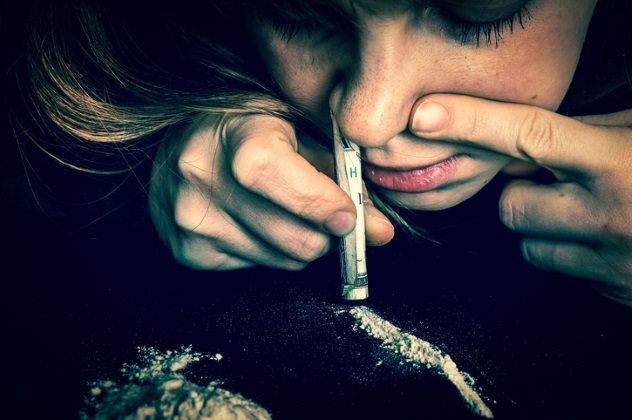
Cocaine has often been touted as a drug with many, many benefits, but it has equally been rebuked as the bane of modern society and the world. Sigmund Freud’s massive body of work and great contributions to both the fields of psychology and philosophy can’t be understated, and in no way could we reduce them to a single thing, but it’s no secret that Freud largely considered cocaine to be a panacea of sorts, curing almost any and every ailment known at the time. In “Uber Coca,” Freud wrote:
Exhilaration and lasting euphoria, which in no way differs from the normal euphoria of the healthy person. You perceive an increase of self-control and possess more vitality and capacity for work. In other words, you are simply normal, and it is soon hard to believe you are under the influence of any drug. Long intensive physical work is performed without any fatigue. This result is enjoyed without any of the unpleasant after-effects that follow exhilaration brought about by alcoholic beverages. No craving for the further use of cocaine appears after the first, or even after repeated taking of the drug.
That’s pretty full-hearted praise for a drug which has seemingly caused so many problems today, which raises the question, is it really cocaine that’s the problem? Or is it our societal structure that demonizes a drug once touted as solving so many problems? Only time and research will tell.
Since prehistoric times, South American natives have chewed on coca leaves in the Andes mountains for the quick burst of energy that the stimulant-rich leaves provide. These are the same leaves from which cocaine was eventually extracted, but chewing them doesn’t produce the euphoric high that comes with the use of actual powdered cocaine. Natives in Peru only chewed the leaves for spiritual and religious ceremonies until the Spanish invaded and began using it as a way to keep enslaved native miners under control.[1]
Cocaine in the form we know today was first synthesized in the 1800s and was prescribed for almost everything imaginable, from depression to tiredness to you name it. After a period of time, physicians would stop prescribing it as it fell out of favor, and regulations over the next half-century would get stricter and stricter until it was finally criminalized entirely.
9 LSD
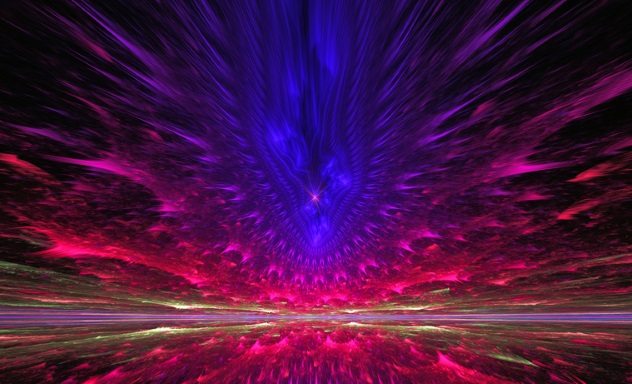
Lysergic acid diethylamide 25, or LSD for short (aka acid, Sid, Sidney, Tabs, and others), was first synthesized by Albert Hofmann in the 1930s. At the time, the Swiss chemist had no idea what he was in for. It was a research chemical until 1943, when he accidentally ingested a small dose of the substance. This was the first trip of LSD ever.
Imagine what it must have been like for Hoffman, not having any idea what was coming. He accidentally ingested some; no biggie. It didn’t burn, and he wasn’t dying. But about two hours later, his entire world transformed into, as Hofmann put it, “extraordinary shapes with intense, kaleidoscopic play of colors.”[2]
From this point forward, LSD to would be experimented with by scientists and government agencies alike. It would mean peace and love to the hippies in the counterculture of the 1960s and a possible weapon of war for the United States government from the 1950s until experiments were eventually abandoned. LSD causes acute hallucinations and distorts reality for the user. If I may get away with a personal testimony, it’s also really fun.
8 Methamphetamine
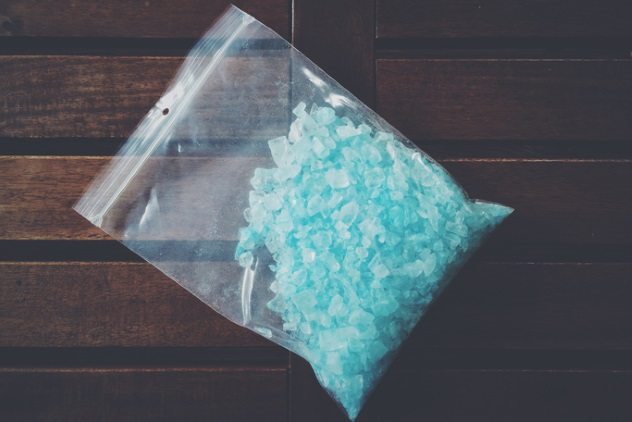
Meth, crystal meth, methamphetamine, go-fast, speed—whatever you call it, meth is a drug that has created total havoc across the United States and the world. Amphetamine itself, a weaker version of methamphetamine, was first produced in Germany in 1887. Then the Japanese came along and experimented with amphetamine to create methamphetamine in 1919. It was cheaper and stronger and worked faster. Due to its crystalline nature, it was easier to melt down and inject directly into the bloodstream, which, with any drug, increases potency significantly.[3]
Methamphetamine played a very large role in World War II, with both German and Japanese forces using it to fuel their soldiers. It’s probably no coincidence that the Japanese fearlessly flew their aircraft into certain death with their kamikaze bombardments, and considering the fact that meth makes sleep virtually irrelevant (not to mention impossible), it’s no wonder the German infantry divisions were able to storm through several countries, each with powerful standing armies, with their unrelenting Blitzkrieg warfare.
After the war, the drug was then sold as a pick-me-up for people who just needed to get through the hustle and bustle of the capitalist day. In 1970, it was outlawed and criminalized by the US government, driving it underground and arguably creating a massive drug problem that didn’t exist before it was only available on the black market.
7 Opium
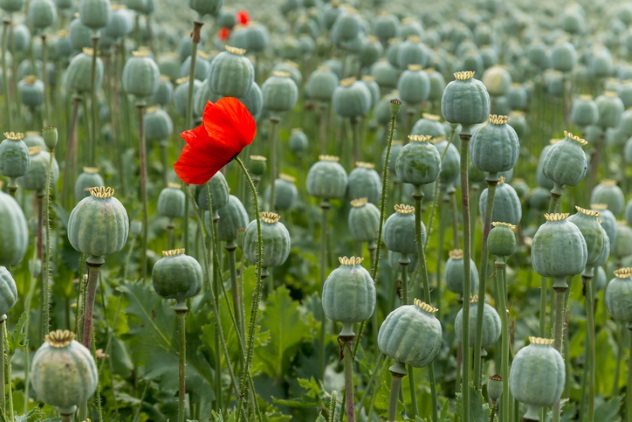
Opium is one of the oldest drugs on the face of the Earth, and its story begins with the beginning of civilization itself. There really isn’t a date for its first use, but it was widely employed in ancient times by cultures such as the Sumerians, Babylonians, Greeks, Romans, Egyptians, and various cultures in India, largely as a pain reliever. In later years, opium was used for no other reason than getting high by Chinese cultures, until, after centuries of smoking their brains out, they realized there were some pretty heavy effects from hard-core opium usage.
The first references to opium date all the way back to 3400 BC in ancient Mesopotamia.[4] It was called Hul Gil, meaning “joy plant,” so it’s safe to say that the ancient Sumerians and Babylonians were stoned as could be. Over the course of history, thanks largely to the Silk Road, opium dens would spring up in cultures from Asia to Europe, where people would just hang out and smoke opium all day long. This would eventually make its way to the United States with the massive influx of Asian Americans, but opium would ultimately fall out of popularity, eventually being replaced by stronger drugs like morphine, heroin, Oxycontin, and fentanyl.
6 Ecstasy
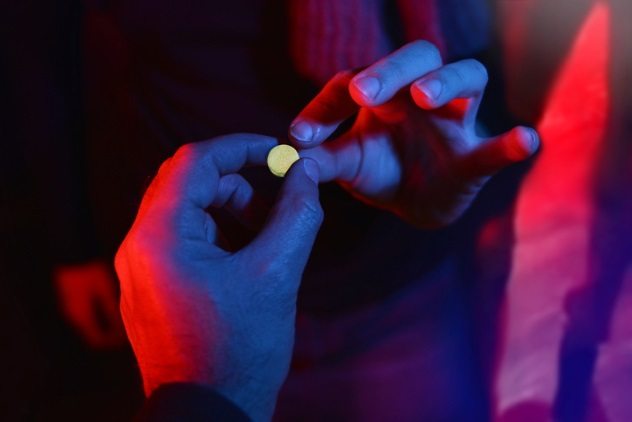
Ah, the love drug. Methyldioxymethamphetamine, aka MDMA, X, or ecstasy, had actually been around for a long time before really being popularized in the 1960s and 1970s in the United States. MDMA was first synthesized by the Germans in 1912, though at the time, they attempted to use it to control bleeding. If only they had known its love drug properties, who knows, we may have averted two massive world wars, but sadly, history took a different route. Like almost every other substance on Earth, MDMA was experimented with by the CIA and other military and government organizations throughout the duration of the Cold War.
By the time the 1960s rolled around, like LSD, partygoers and hippies nationwide began getting their hands on ecstasy, synthesizing it themselves, or both. It remained an underground party drug for two decades, until, abruptly and without any real definitive cause, the DEA declared an emergency ban in 1985, making ecstasy a Schedule I drug, meaning that it has no medical value whatsoever and a high potential for abuse. This was largely part of the War on Drugs launched by the Reagan administration, the effects of which are still felt today.[5]
While it is still Schedule I, a mountain of evidence has amassed that MDMA has a lot of potential medical benefits, particularly in addressing depression, PTSD, and other psychological problems that all too many suffer from. Perhaps in time, our attitudes will change, and this substance can be explored to benefit humankind far beyond just being a “party drug.”
5 DMT
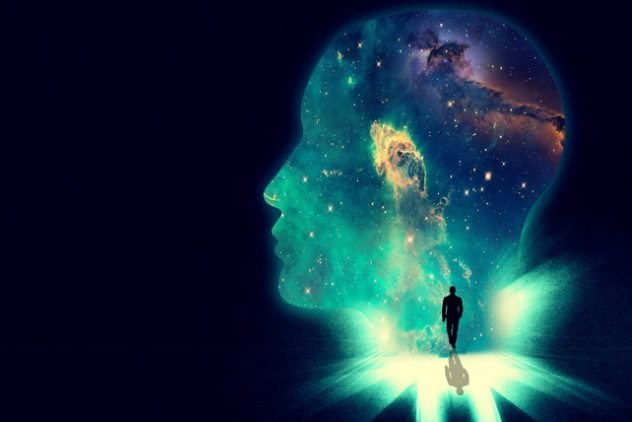
N,N-Dimethyltryptamine, or DMT, has grown in popularity over the past decade or so, even though it was first synthesized in 1931. Its story is definitely an interesting one. At first, it was never tried as a drug and probably just remained a research chemical for about 15 years. It laid dormant until it was discovered to be a component of various shaman potions used by tribes in South America.
The psychoactive effects of this strong hallucinogen weren’t discovered until 1956, when a chemist named Stephen Szara was unable to obtain LSD or mescaline and thus decided to try out DMT himself to see if it had a psychoactive effect. After repeated attempts to ingest it just to find out if any sort of psychoactive properties did indeed exist (that’s how they figured out if drugs worked or not back then), all of which failed, Szara figured that maybe it was just ingesting DMT straight that was the problem. In an act of either great bravery or desperation, he decided to inject it, and viola! It worked. The psychoactive effects of DMT were thus discovered and have been known ever since.[6]
DMT produces a very short but extremely intense hallucinogenic experience that some describe as out-of-body and others out-of-universe. It’s often smoked and seen as a spiritual substance among its users. In 1970, the United States government added DMT to the Schedule I classification, where it remains to this day.
4 Psilocybin
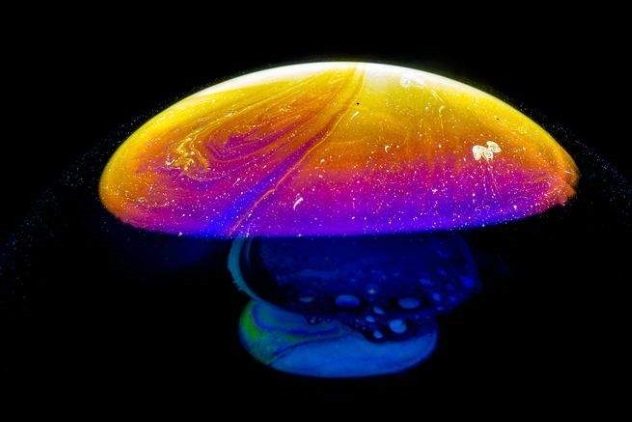
The story of magic mushrooms is a long and fascinating one. There are over 200 types of psilocybin-containing mushrooms around the world, and their use dates as far back as 9000 BC; yes, people were taking drugs 11,000 years ago. The evidence for this comes from cave paintings found in North Africa, and similar paintings have been found in Spain that are dated to around 6000 BC. Across the globe, psilocybin mushrooms have been used in religious rituals, with the Aztecs even calling them the “flesh of the gods.”[7]
The Western world, however, largely ignored mushrooms as a drug. It wasn’t until the 1950s that, guess who, Albert Hofmann was able to extract the psilocybin from mushrooms found in Mexico, and the hallucinogenic properties were found. The results were published, and mushrooms soon became a staple of American (and Western) drug use.
Not only are mushrooms the safest recreational drug to use, but there is a growing body of evidence that they’re extremely medicinal, helping with depression and other mental health issues, such as anxiety. This makes psilocybin one of many drugs, along with LSD and MDMA, that could have profound effects in the world of medicine. This, of course, would require a change in the way we view drugs and compounds which alter our perception.
3 Heroin

Like most drugs on this list, heroin wasn’t originally illegal. It was first synthesized in England by C.R. Adler Wright in 1874. He was experimenting with morphine and acids to try and create a more potent form of the painkiller. The result was a chemical called diacetylmorphine, and at the time, Wright didn’t know what he had on his hands. Diacetylmorphine would remain just another chemical that was discovered and shelved for another 20-some years until it was resynthesized by a German chemist named Felix Hoffmann. His goal was to synthesize codeine, an opium component that isn’t as powerful or addictive, but what came out in the mix was diacetylmorphine, which is up to two twice as strong as regular morphine. The German company Bayer decided to call the new compound Heroin, a word they derived from heroisch, which is German for “heroic.”[8]
Heroin was officially born. Initially, it was thought significantly less addictive than morphine, and thus, the substance was very easily obtainable. Bayer sold and promoted heroin as a nonaddictive alternative to morphine for many years, when, in actuality, heroin is much, much more addictive than morphine. The United States experienced a major heroin epidemic directly after World War II and another one in the 1960s. During WWII and the Vietnam War, heroin was cheap and easy to obtain for soldiers, and for the wounded who’d become addicted to morphine, it was a stronger, more addictive substitute once their morphine treatment ran out. An opioid crisis is currently plaguing the nation once again.
2 PCP
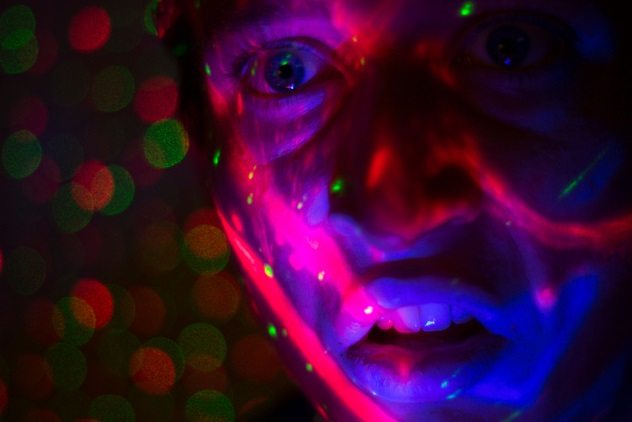
Also referred to as angel dust, phencyclidine (PCP) is an extremely powerful hallucinogen that produces violence, psychosis, and convulsions in high doses, while at low doses, it produces effects similar to LSD. PCP is one of the most dangerous drugs there are, not only because of its potency but also because its effects vary so drastically from user to user, from instance to instance. Even experienced users don’t know how they will respond, considering that mood and atmosphere play major roles in how one is going to react to the drug.
First synthesized under the name Sernyl, PCP was originally to be used as an anesthetic in the 1950s and would have mainly been employed as an animal tranquilizer. But, like most drugs, PCP found its way into the hands of people who would inevitably use it as a recreational substance.[9] It wasn’t until the mid-1960s that PCP, being cheap and easy to manufacture as it is, started being produced by street pharmacists and sold as a recreational drug in the United States. PCP, unlike other drugs, is particularly a US phenomenon. Its popularity never really spread to other countries.
1 Marijuana
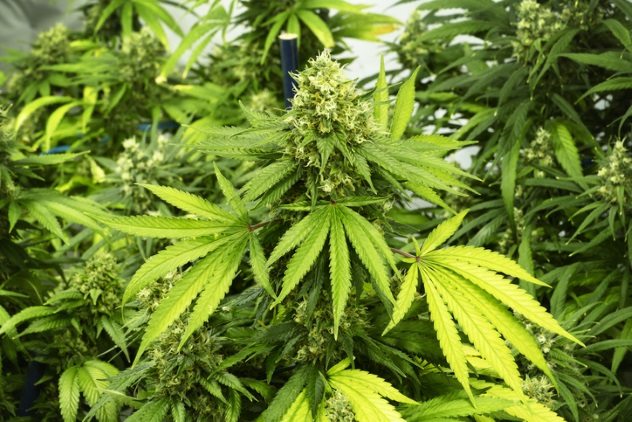
As of this writing, there are battles being fought in various states, provinces, and countries for the legalization of marijuana, the most controversial drug to ever exist. With its medicinal benefits and relatively low risks for the user, marijuana surely gets a bad rap and has a history entrenched in racism, hatred, and bigotry. Cultures worldwide used cannabis for thousands of years. In China, documentation of marijuana’s medical effects dates as far back as 4000 BC. The ancient Greeks and Romans were no strangers to weed, just like they were no strangers to opium. We don’t often think of ancient cultures as being ones of heavy drug use, but it would make sense that they were, as they were often much more orgiastic than our rather restrictive, puritanical culture of today.
Because marijuana is particularly fast-growing as well as the fact that hemp can be used for a variety of things, the early American colonists grew it plenty. In fact, it was even required in several colonies that hemp be grown on farms. The colonists and US Founding Fathers weren’t at all strangers to pot, with hemp and marijuana both having historical roots in the US as deep as whiskey. By the 1800s, marijuana and its extracts were being sold as medication for a variety of ailments, from lack of appetite to stomach problems to pretty much everything one could use it for.
Then, around the turn of the 20th century, the story of marijuana in the US would take a drastic turn. With the influx of Mexican immigrants during the years of the Mexican Revolution, marijuana began being much more widely smoked recreationally in the United States, largely by immigrants. When the Great Depression hit, and unemployment was at its highest, cannabis would be dubbed the “evil weed” in the 1930s, and in 1937, the Marijuana Tax Act criminalized marijuana in the entirety of the United States.[10]
The battle of legalization versus criminalization of marijuana has been fought in the minds and hearts of America ever since, and its prohibition certainly hasn’t decreased its use. Every day, science finds more and more uses and potential benefits of marijuana and its extracts, and with a sizable chunk of the US and several European countries legalizing it entirely, it’s arguably only a matter of time before cannabis is legalized in some form or another everywhere. But, of course, time will tell.
I like to write about the darker side of humanity, philosophy, true crime—the world is much more fascinating than fiction.
Read more drug facts on Top 10 Facts About Drugs And Warfare and 10 Reasons the War on Drugs is Killing You.








